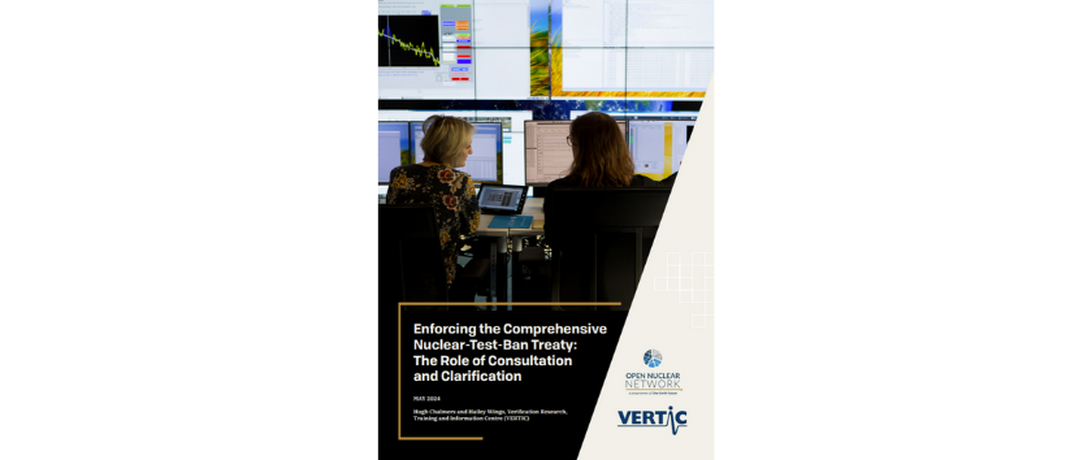
This report is an outcome of a two-part project titled "Strengthening nuclear test ban monitoring via nongovernmental satellite imagery analysis and mechanisms for resolving compliance concerns," supported by the Foreign, Commonwealth & Development Office’s Counter Proliferation Programme.
Executive Summary
The verification mechanisms of the Comprehensive Nuclear-Test-Ban Treaty (CTBT) have undergone significant development since the treaty was agreed almost 30 years ago. The International Monitoring System (IMS) and its supporting International Data Centre (IDC) have grown to the extent that they can reliably detect all but the smallest nuclear weapon test explosions in any environment. The treaty’s on-site inspection mechanism has been exercised and will be exercised again in 2025. However, the treaty’s consultation and clarification mechanism has received far less attention.
Article IV.C. of the treaty stipulates that:
“Without prejudice to the right of any State Party to request an on-site inspection, States Parties should, whenever possible, first make every effort to clarify and resolve, among themselves or with or through the Organization, any matter which may cause concern about possible non-compliance with the basic obligations of this Treaty.”
If concerns arise that a state party has carried out a nuclear weapon test, will states agree when it is or is not possible to clarify those concerns in this way? Will they agree on when “every effort” has been made to resolve those concerns? And will they agree on how this mechanism should be used to support, rather than complicate, their approach to verification and enforcement? An examination of the negotiating history of the CTBT suggests that the language of Article IV.C obscures different expectations for consultation and clarification. Case studies from other relevant regimes indicate that the way in which consultation and clarification are (or are not) pursued can significantly influence the way compliance is ultimately demonstrated and enforced.
This report argues that the invitation in Article IV.C gives states a valuable opportunity to engage informally with each other to build confidence in their commitment to the CTBT and to dispel ambiguous signals that may cast doubt on that commitment. Nuclear-armed state signatories may draw inspiration from this article to reinforce their voluntary test moratoriums and encourage mutual restraint. Test site transparency—including voluntary site declarations and visits—could be a good place to start in this regard.
This report also argues that it is easier to build confidence behind the scenes than it is to resolve concerns in public. Case studies from the Chemical Weapons Convention and Biological Weapons Convention show that formally pursuing consultation and clarification creates a very public stage. Without a shared understanding of how that stage should be used, it could be vulnerable to misuse. State signatories may wish to consider what role the CTBT Executive Council should play in directing proceedings, how the Technical Secretariat should support the players, and how the outcomes would be perceived by the broader audience of all states parties. The CTBT expects that at its entry into force, all aspects of its verification regime—including Article IV.C—shall be capable of meeting the verification requirements of the treaty. State signatories may wish to revisit their expectations for consultation and clarification in this regard. Article IV.C opens a door through which a huge array of requests (whether pertinent or vexatious), information (whether public or private), and goals (whether virtuous or cynical) could be pursued. By exploring how consultation and clarification could be used or misused, state signatories to the CTBT can build towards a shared understanding of how Article IV.C can strengthen the treaty and support its entry into force.
Access the full report as a PDF here or on the right-hand side.